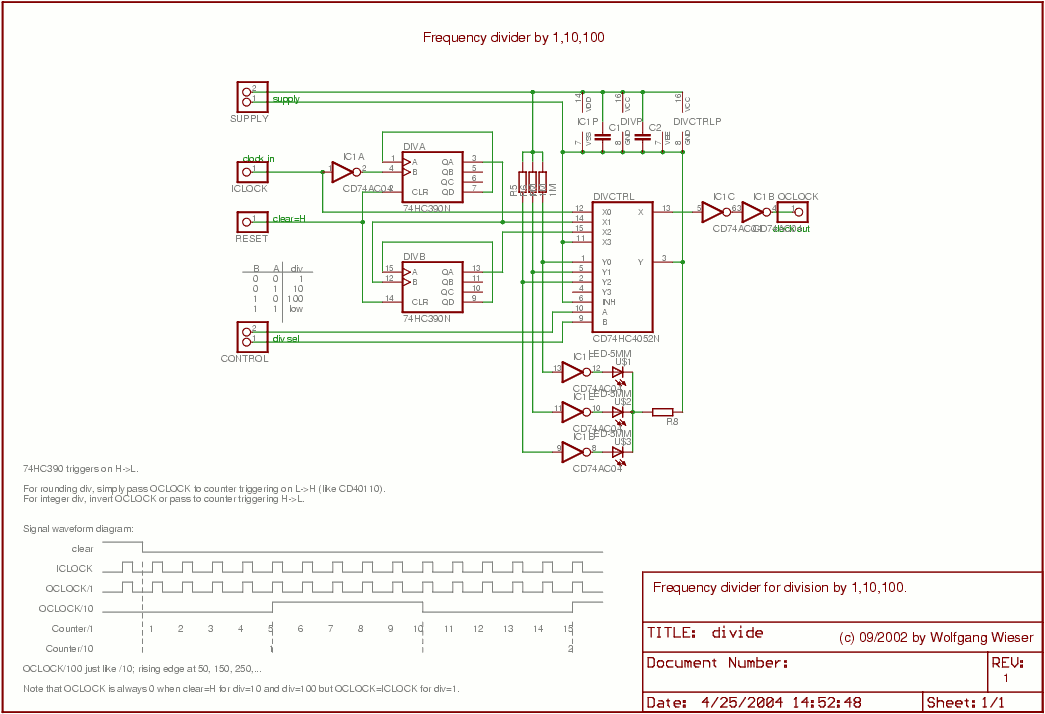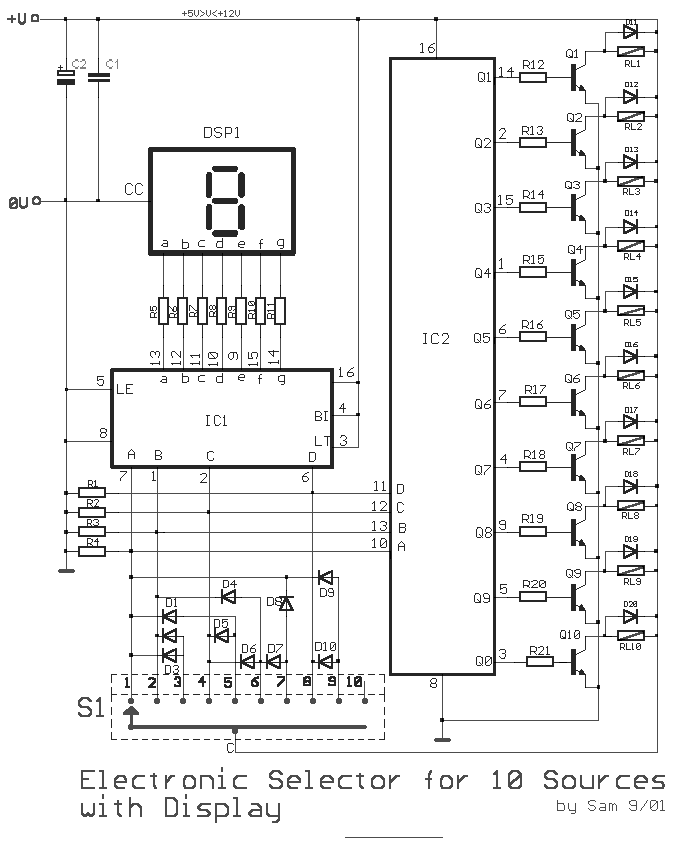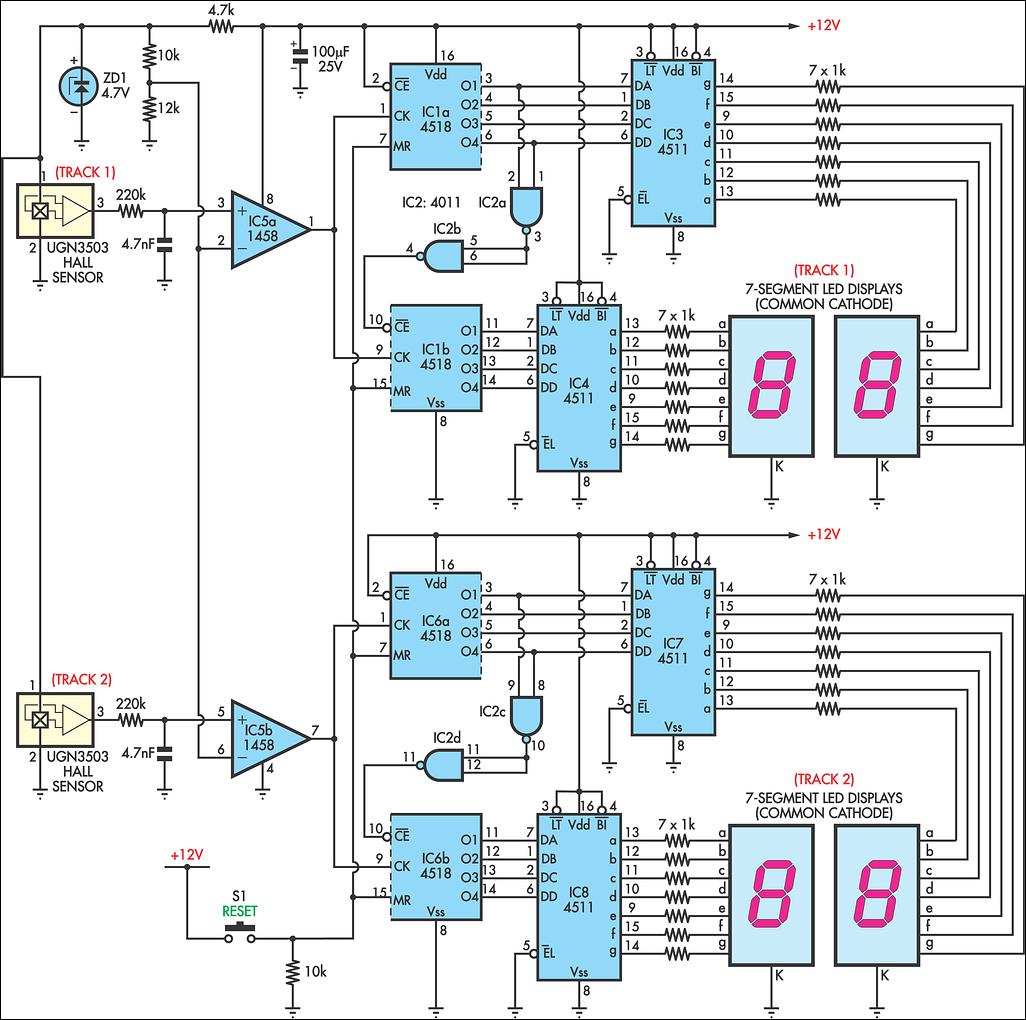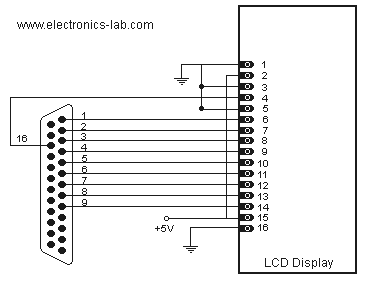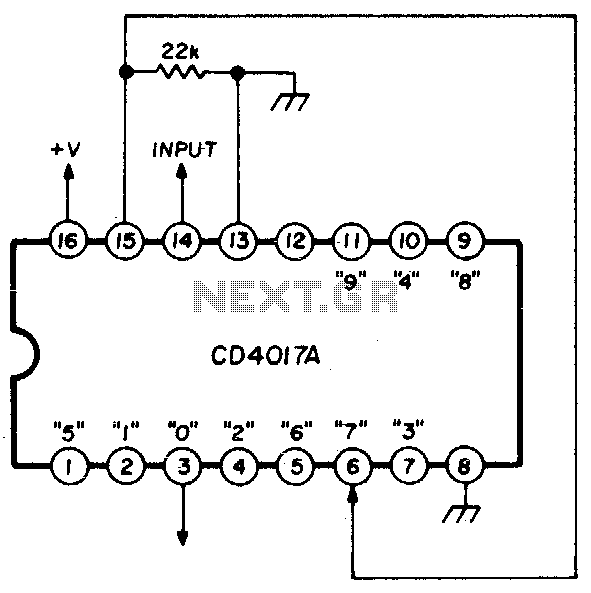
4033 7 Segment Common Anode Display Counter
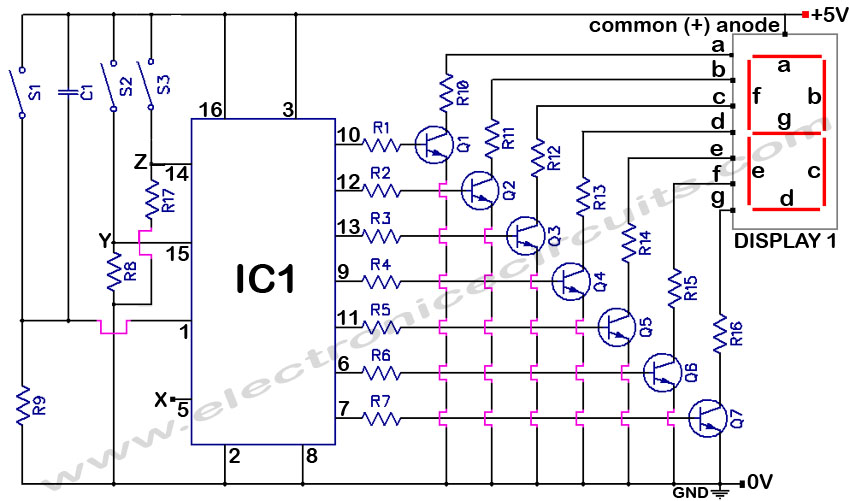
4033 7 Segment Common Anode Display Event Counter Circuit. This circuit can count from 0 to 9 with a reset function and a display test feature.
The 4033 7-segment common anode display event counter circuit is designed to count events in a range from 0 to 9. It utilizes a 4033 integrated circuit, which is a decade counter that can drive a common anode 7-segment display. The circuit is capable of resetting the count and includes a display test feature to ensure proper operation of the display segments.
In this circuit, the 4033 IC is connected to the 7-segment display such that each output pin corresponds to a segment of the display. The common anode configuration means that the anodes of the display segments are connected to a positive voltage supply, while the cathodes are driven low to illuminate the segments. The counting operation is initiated by applying a clock signal to the clock input of the 4033. Each pulse of the clock increments the counter by one, and the corresponding output pins are activated to display the current count on the 7-segment display.
A reset button is typically included in the design, connected to the reset pin of the 4033. Pressing this button will reset the counter back to zero, allowing for a new counting session to begin. The display test feature is implemented by connecting a test button to the 4033, which, when pressed, activates all segments of the display simultaneously. This allows for verification that each segment is functioning correctly.
Power supply requirements for this circuit usually involve a standard voltage of 5V, which is suitable for the 4033 IC and the 7-segment display. Proper decoupling capacitors should be included near the power supply pins of the IC to filter out noise and ensure stable operation.
Overall, the 4033 7-segment common anode display event counter circuit is a straightforward yet effective solution for counting applications, providing visual feedback through the display and allowing for easy reset and testing functionalities.4033 7 Segment Common Anode Display Event Counter Circuit This circuit can count 0 to 9 with reset and display test.. 🔗 External reference
The 4033 7-segment common anode display event counter circuit is designed to count events in a range from 0 to 9. It utilizes a 4033 integrated circuit, which is a decade counter that can drive a common anode 7-segment display. The circuit is capable of resetting the count and includes a display test feature to ensure proper operation of the display segments.
In this circuit, the 4033 IC is connected to the 7-segment display such that each output pin corresponds to a segment of the display. The common anode configuration means that the anodes of the display segments are connected to a positive voltage supply, while the cathodes are driven low to illuminate the segments. The counting operation is initiated by applying a clock signal to the clock input of the 4033. Each pulse of the clock increments the counter by one, and the corresponding output pins are activated to display the current count on the 7-segment display.
A reset button is typically included in the design, connected to the reset pin of the 4033. Pressing this button will reset the counter back to zero, allowing for a new counting session to begin. The display test feature is implemented by connecting a test button to the 4033, which, when pressed, activates all segments of the display simultaneously. This allows for verification that each segment is functioning correctly.
Power supply requirements for this circuit usually involve a standard voltage of 5V, which is suitable for the 4033 IC and the 7-segment display. Proper decoupling capacitors should be included near the power supply pins of the IC to filter out noise and ensure stable operation.
Overall, the 4033 7-segment common anode display event counter circuit is a straightforward yet effective solution for counting applications, providing visual feedback through the display and allowing for easy reset and testing functionalities.4033 7 Segment Common Anode Display Event Counter Circuit This circuit can count 0 to 9 with reset and display test.. 🔗 External reference
